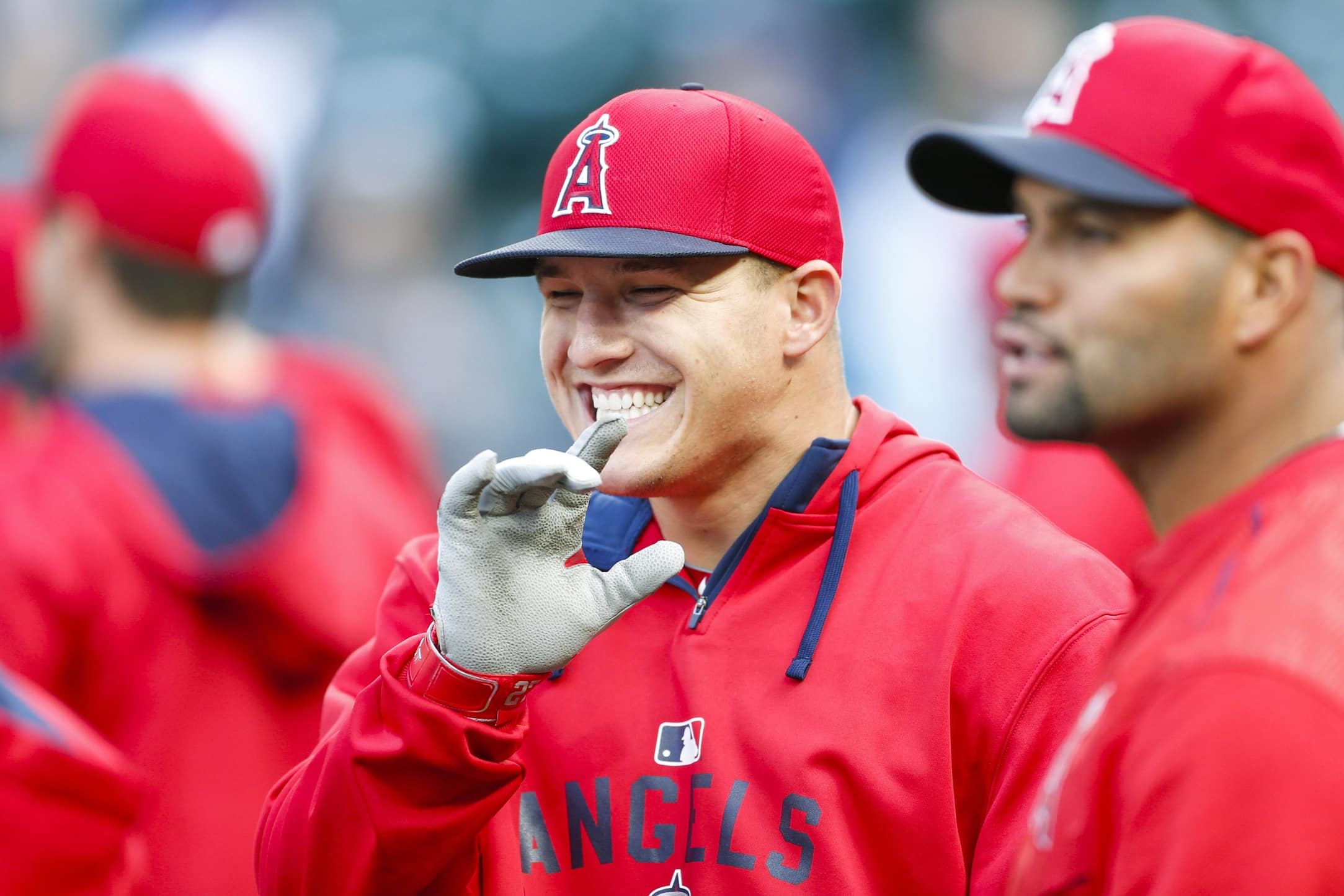Bryce Harper reportedly signed with the Philadelphia Phillies on Thursday. As big of a deal as that is for Philadelphia and its fans, it could mean even more down the line. Come Opening Day 2021, it’s entirely possible that the Phillies could field an outfield with both Harper and Mike Trout.
Long before Harper signed with Philadelphia, we heard that the Phillies would make a play for Trout — the Jersey boy who still feverishly supports Philadelphia’s other teams — when he becomes a free agent after 2020. With Harper now aboard, it still feels plausible.
Harper’s deal was good for the Phillies: Normally, signing a player of Harper’s caliber would be too costly to even think about adding another star, let alone someone like Trout. But this deal was different.
- Harper’s reported deal with Philadelphia was for $330 million over 13 years.
- That’s an AAV of just over $25 million. For reference, the new deals signed by Nolan Arenado and Manny Machado pay them an average of over $30 million a year.
- We’re not calling that a bad deal for Harper. He got the long-term security he obviously wanted. But while we don’t need to open a GoFundMe page for Harper, that team friendly AAV is hard to overlook. The Phillies have some financial flexibility.
That helps. But on its own, saving an extra $5-$10 million a year on Harper isn’t going to get Philadelphia close to Trout. That’s a given.
The Phillies have more money to clear: With very little imagination, Philadelphia can actually clear more money than it’s adding with Harper.
- Philadelphia can clear $32 million by declining the 2021 team options on Jake Arrieta ($20 million) and David Robertson ($12 million). Arrieta, who has a $20 million option for 2020, might be gone by then anyway.
- Even with those guys still on the roster, the Spotrac’s pre-Harper projections had the Phillies at more than $100 million under the luxury tax threshold. The addition of Harper’s deal will trim that to a shade over $80 million.
- That’s still good enough to land Trout, extend J.T. Realmuto, and land plenty of other good players to fill the roster out.
So, the money shouldn’t be too much of an issue.
That said, there is another potential holdup that needs to be figured out.
The Phillies have a crowded outfield: Harper, Andrew McCutchen, and Odubel Herrera are all under contract in 2021.
- The rule of thumb is that if you have the chance to land someone like Trout, you make room. Now, Harper, McCutchen, and Herrera are already a formidable outfield. That complicates matters, but only somewhat.
- There’s always the possibility of a trade. Harper is going nowhere. But McCutchen or Herrera could well be moved to make room for Trout.
- Even if that doesn’t happen, it’s well within the realm of possibility that the DH could be added to the NL by then. If that happens, one of them (probably McCutchen, who’ll be 34 in 2021) could handle that role.
- But if there’s no trade and no DH, the Phillies do have 2022 team options for both Herrera ($10.35 million) and McCutchen ($20 million). So, worst case scenario is that they’d sign Trout and carry one of them as an expensive fourth outfielder for a year. It’s not ideal, but it’s manageable.
In the end, the only thing that can really keep the Phillies for going all-in for Trout is if he signs an extension with the Los Angeles Angels before then. At one point, the Halos were reportedly set to offer Trout a “lifetime deal.”
A mega-extension could happen. But the fact is that Trout is the best player in the game and has been for the better part of a decade. Despite his sustained brilliance on the field, Trout will be only 29 when he hits free agency. Players like that generally don’t deprive themselves of a chance to test the open market.
The Phillies will not be the only team in on Trout. That’s a given. But for most of the offseason, it was fair to wonder if signing Harper might prevent that from happening. That doesn’t appear to be the case. In fact, if anything, Harper signing in Philadelphia only makes Trout coming feel more realistic.

